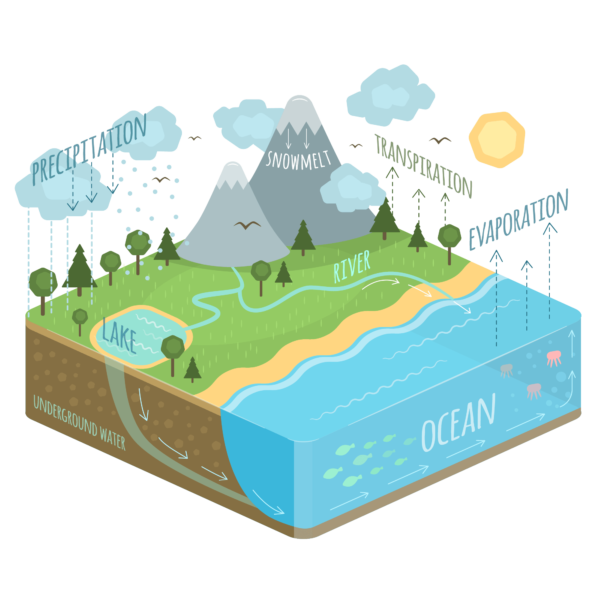Land: Our Source of Water
Before water flows freely from your tap, it begins as a rain drop on a farm or ranch. How these lands are managed directly impacts the quality of drinking water for our cities.
Before water flows freely from your tap, it begins as a rain drop on a farm or ranch. How these lands are managed directly impacts the quality of drinking water for our cities.

Conserving land where the raindrops fall is an immediate and cost-effective way to help ensure clean water for future Texans. While land conservation doesn’t produce new water, it does recharge aquifers, prevent flooding, and clean runoff water that is needed for our rivers and streams. This is the natural water cycle.
Conserving the rural lands where the rain falls requires that we find innovative ways to help landowners to keep their farms, ranches and wildlife areas intact. When properties are developed or chopped into smaller and smaller pieces, they are no longer able to support the natural water cycle as effectively as large tracts of open space. Instead of water seeping into the ground and recharging aquifers, we get massive floods and runoff.
The 2015 Texas legislature appropriated $2 million to the Texas Farm & Ranch Lands Conservation Program (TFRLCP) to protect rural lands.
This program provides a one-time payment to landowners who agree to keep their properties in agriculture forever through a conservation easement . Recorded at the court house, the conservation easement “runs with the land” and ensures that the land will stay in agricultural use in perpetuity
In 2016, TFRLCP awarded seven grants to transact perpetual conservation easements on approximately 10,000 acres. A recent analysis from Texas A&M’s Institute of Renewable Natural Resources shows that the state’s one-time investment of $2 million will protect $12m in water values on an annual basis. These voluntary conservation easements will ensure that the water resources found on these properties will be protected forever.
According to Texas Land Trends, every ten years Texas loses more than 1 million acres to development, and another 4 million acres are fragmented. While the 10,000 acres protected through the initial $2 million appropriation to TFRLCP is a good start, it is but a drop in the bucket compared to the need. Let’s protect the rural lands that capture our water before it’s too late! More Land More Water!
Working, agricultural lands sustain our quality of life. The conservation of that land provides enormous public benefits which we rarely consider. These lands:
Working lands also support rural communities and make them economically sustainable, which in turn perpetuates our rich social and cultural heritage.
The management of rural lands directly impacts water quality and quantity. Managing our land and water resources for adequate spring flows, stream flows and aquifer recharge protects the water needed for our recreational use and habitats for fish and wildlife – and our drinking water.
In Texas there are:
An abundance of well-managed open-space land directly impacts the quality and quantity of water that flows to each of the above listed water resources. When the water passes through well stewarded land first, less investment is needed to capture and clean that water for household use.
The use of public dollars to conserve private and public working land as a water quality and quantity strategy has provided huge returns for the citizens of New York City, Minneapolis/St. Paul and Dallas.